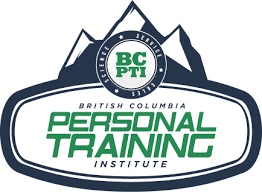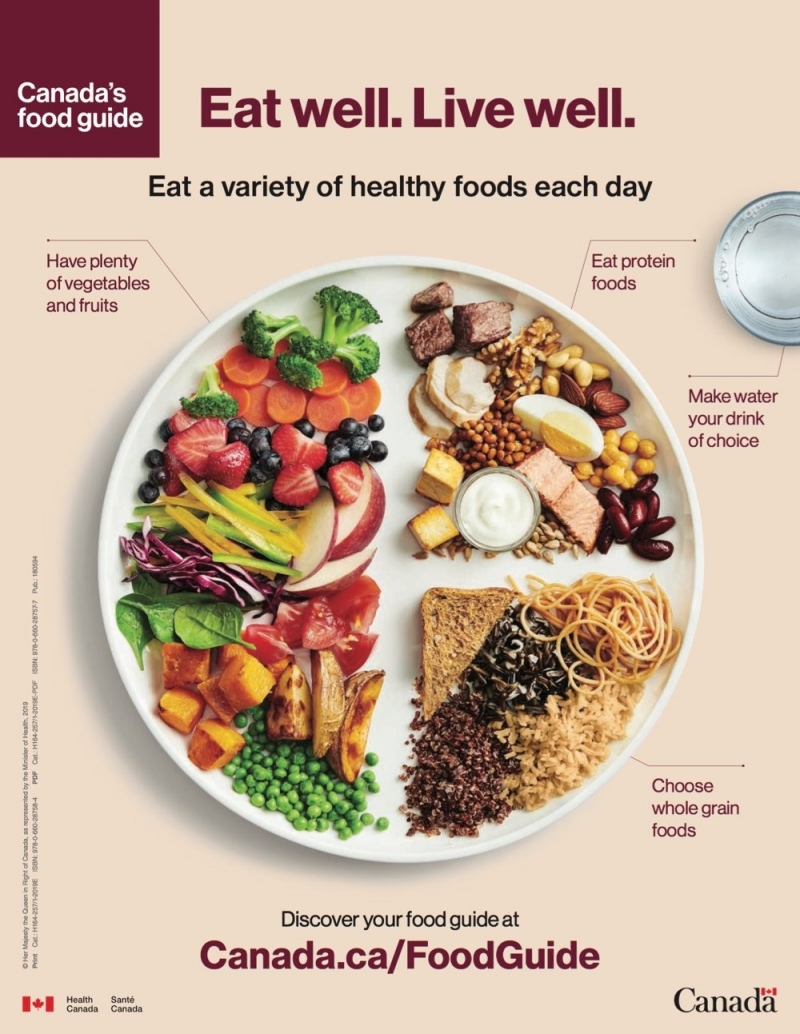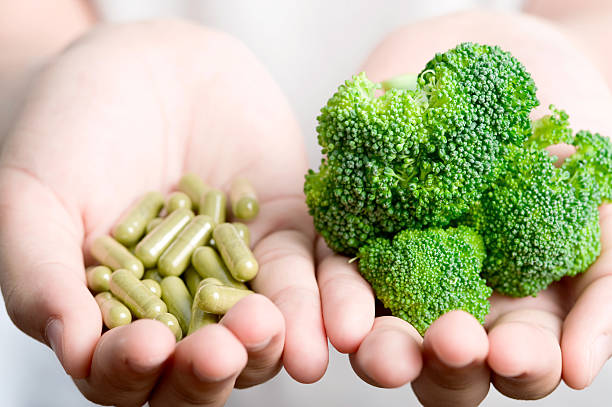Canada’s New 2019 Food Guide
Canada’s Food Guide has evolved through the years. And boy were we due for an update! When I was a new trainer, I struggled with the fact that our scope of practice limited our conversations with clients to this government guide. I mean who, pursuing weight loss, was going to eat up to 12 servings of grains per day?! In the 20 years I’ve been in fitness I’ve watched the rising rate of obesity and I’ve listened, year after year. to the challenges and complaints from clients struggling to achieve and sustain a healthy weight. But before I explain the new updates let’s take a look at some of the previous versions:
1942
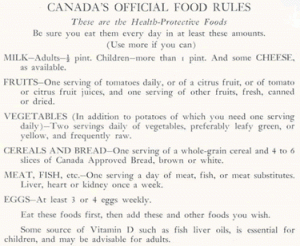
1949
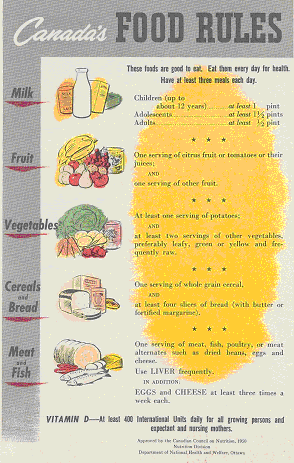
1961
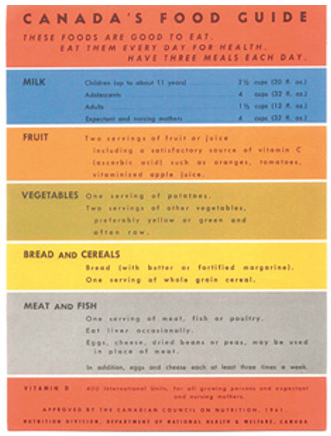
1977 – 1982
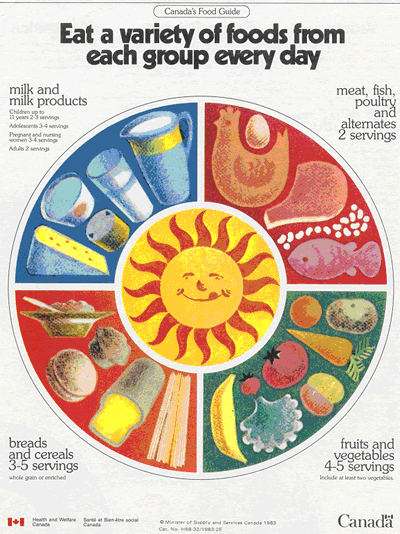
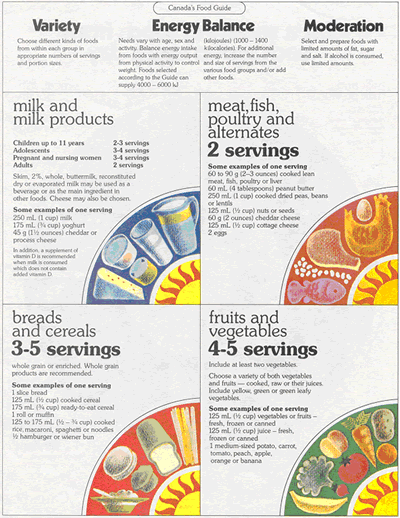
“… after reviewing the information available on the relationship between diet and cardiovascular disease, [the committee] believes that there is an adequate basis for recommending changes in the Canadian diet.”
Two significant modifications resulted. While the emphasis on the “variety” message continued, the “energy balance” message was expanded to stress balancing energy intake with energy output. Further, a new “moderation” message appeared. On the surface, the changes appeared to be minor. In fact, they signified a major shift in dietary advice. The previous food guide goals of preventing nutrient deficiencies were now being integrated with the goal of reducing chronic diseases. In particular, the moderation statement, which encouraged Canadians to limit fat, sugar, salt, and alcohol, was an attempt to curb the rising rate of diet-related chronic diseases by influencing eating habits.
The four food groups remained the same. However, the name of the meat group was changed to Meat, Fish, Poultry and Alternates – longer but perhaps more inclusive.”
1992
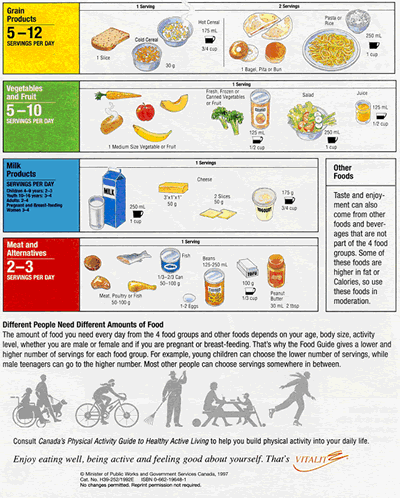
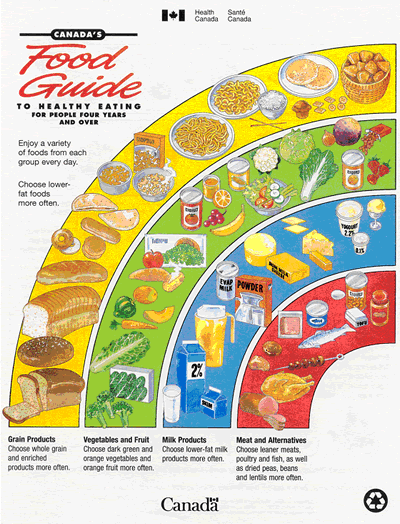
“The title was changed to reflect the overarching goal of the Guide, becoming Canada’s Food Guide to Healthy Eating. The design changed – a rainbow graphic now displayed the four food groups, all of which bore new names: – Grain Products, Vegetables and Fruit, Milk Products, and Meat and Alternatives. The biggest change was a shift in the philosophy of the Food Guide in that the 1992 Guide embraced a total diet approach to choosing foods…. With the total diet approach came large ranges in the number of servings from the four food groups to accommodate the wide range of energy needs for different ages, body sizes, activity levels, genders and conditions such as pregnancy and nursing. The Guide also introduced the Other Foods category which included foods and beverages that did not fit into any of the four food groups and, although part of the diets of many Canadians, would traditionally not have been mentioned in a food guide.”
2007

Features of the 2007 Food Guide included:
- Vegetables & Fruit food group positioned as the most prominent arc in the rainbow design
- More guidance on the quality of food choices that focuses on risk reduction for chronic illness and obesity
- Food intake patterns providing specific guidance for children over 2 years, adults over 50 years, and women (pregnant, breastfeeding and those who could become pregnant)
- Milk Products group changed to Milk and Alternatives to acknowledge other food sources of calcium such as fortified soy beverage for non-milk drinkers.
- Encourages the reduction in trans fats and the replacement of saturated with unsaturated fats.
- For Canadians over age 50 a daily vitamin D supplement recommended.
- Encourages regular physical activity as a benefit along with eating well.
- Specific information on using the food label to choose healthy foods.”
https://www.canada.ca/en/health-canada/services/canada-food-guide/about/history-food-guide.html
So, after 27 years of the food rainbow we’re back to a plate. Half is filled with colorful fruits and vegetables and a quarter each shows whole grains and the protein-rich group. The decision was also made to drop the serving recommendations. Dr. Yoni Freedhoff, an associate professor in the department of family medicine at the University of Ottawa said “Nobody weighed and measured their foods. Nobody really followed it, nobody knew what a serving size was.” The new guide focuses on a high proportion of plant-based foods and while the guide’s primary focus is health, the agency says “eating more plant and fewer animal-based foods can help to conserve soil, water and air.”
Additionally, the recommended beverage of choice is water – essential for digestion and ensures hydration without adding empty calories like fruit juice and soda. Water is also found in fruit, vegetables and soup. Our PTA Global certification teaches that humans need 12 cups of water a day.
This comes from:
- 1 cup of water produced by metabolic processes
- 4 cups of water consumed via food
- 7 cups of water to drink
(plus 4 cups of water per hour of exercise)
The guide also warns of the health risks of drinking excess alcohol and Canadians are being advised to limit consumption of highly processed foods and to watch intake of sodium, sugar and saturated fats. Reading (and understanding) food labels and being aware of food marketing is also a prominent message. (How many of us have a favorite childhood cereal box character? This kind of advertising is directly aimed at children and can make it tougher for parents to get kids (especially picky eaters) to eat healthy meals.

But my favorite update of all comes on the 2nd image. Healthy eating is more than the foods you eat. The guide is now addressing the social environment of eating as well as taking a gentle stand against eating at your desk, the convenience of fast food, apps with bicycle delivery and the fact that a lot of people just don’t prepare their own food very often anymore (some of my younger clients in the past few years have admitted that they actually don’t know how to cook at all.) Check out these additional guidelines:

I find this to be a particularly powerful message because of the psychology and emotional connections we have to food. The difference between hunger (the physiological drive to fuel the body) and appetite (a psychological drive for food as a form of stress relief, comfort or balm against any number of negative emotions including loneliness) is something we talk a lot about in terms of coaching our clients in nutrition. Addressing stress triggers, getting curious about the emotional roots of overeating and finding ways to achieve a healthy caloric deficit to facilitate a weight loss goal is just as important as educating our clients on the caloric density of carbs, fats and protein and the importance of balanced macronutrient consumption. It’s great that the new Food Guide lends credibility and visibility to our efforts in these coaching conversations.
Since the ease of access to information via the internet, Health Canada actually provides a much wider range of resources than the guide alone. Check out the link below for the full panel of resources:
https://www.canada.ca/en/services/health/food-nutrition.html
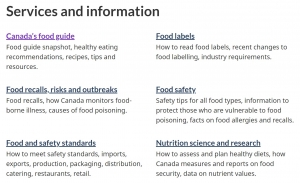
I’m feeling some powerful synergy as we incorporate more nutrition content and client-centric coaching experiences in our CPT program and add dedicated nutrition education to the nashFIT calendar for our graduates who pursue employment with our partners, SNFC. Familiarize yourself with the new Food Guide because until you’ve completed additional certifications, this is actually a great resource to use with your clients while respecting the boundaries of your scope of practice!
So, in summary: make it a habit to eat a variety of healthy foods each day.
Limit highly processed foods. If you choose these foods, eat them less often and in small amounts.
- Prepare meals and snacks using ingredients that have little to no added sodium, sugars or saturated fat
- Choose healthier menu options when eating out
Make water your drink of choice
Be aware that food marketing can influence your choices
Blog By: Logan Dube, BCPTI Lead Educator & Director of Education
